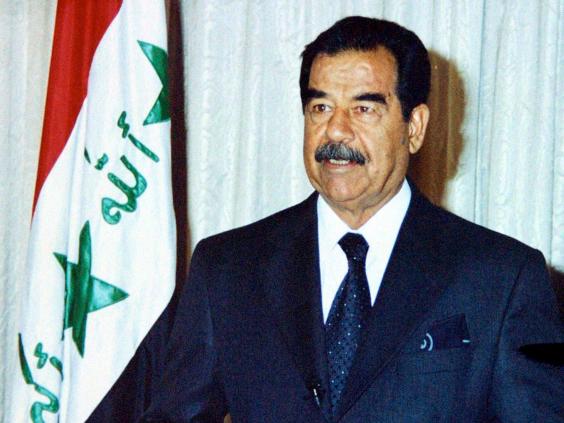
CORPUS
CHRISTI, TX – AUGUST 25: Waves pound the shore from approaching
Hurricane Harvey on August 25, 2017 in Corpus Christi, Texas. Hurricane
Harvey has intensified into a hurricane and is aiming for the Texas
coast with the potential for up to 3 feet of rain and 125 mph winds. Joe
Raedle/Getty Images/AFP
Hundreds of thousands of people in Texas and Louisiana were urged Friday
to flee the path of Hurricane Harvey as the Gulf Coast braced for the
most dangerous storm to hit the US mainland in over a decade.
Roaring towards land with winds whipping up to 110 miles (175
kilometers) an hour, the category two hurricane is predicted to smash
into coastal Texas late Friday or early Saturday as a much more powerful
category three storm, forecast to dump up to 35 inches (89 centimeters)
of rain.
Harvey is on course to make landfall as the strongest storm since the
devastating Katrina 12 years ago, triggering “catastrophic” floods in
an area that processes some seven million barrels of oil a day — in what
could prove a major new test for President Donald Trump’s
administration.
Several Texas counties ordered mandatory evacuation from coastal areas.
Those residents not under mandatory orders were also urged to leave
immediately, or bunker down for a storm that could stall over the area
for four or five days, dropping historic amounts of rain and inflicting
billions of dollars in damage that could take months to repair.
Local television footage showed supermarket aisles plucked bare,
highways clogged with bumper-to-bumper traffic, and long lines snaking
outside gas stations.
“All the advice we can give is get out, and get out now,” said
Patrick Rios, the mayor of Rockport, Texas where an estimated 60 percent
of the town’s 9,500 residents had left.
Rios had blunt words for those determined to stay, telling them to
“mark their arm with a sharpie pen, put their social security number” —
to be identified if found dead.
Coastal Texas is a fast-growing area, with some 1.5 million people
moving into the area since 1999. Authorities said the combination of
dense growth and a storm that could deposit a year’s worth of rain in
just days could prove deadly.
“Texas is about to have a very significant disaster,” Brock Long,
director of the Federal Emergency Management Agency (FEMA), told CNN.
“Their window to evacuate is rapidly coming to a close.”
The National Hurricane Center (NHC) warned of the “complete
destruction of mobile homes,” of many buildings “washing away,” and some
areas being left “uninhabitable for weeks or months.”
Police in Montgomery County urged residents to unchain their dogs lest they risk drowning.
Newborns evacuated
Former president George W. Bush faced severe criticism in 2005 after
FEMA appeared unprepared for the devastating damage inflicted by
Katrina, and one Republican senator warned Trump to step up to the
challenge at hand.
“Keep on top of hurricane Harvey don’t make same mistake Pres Bush
made w Katrina,” Chuck Grassley urged the US leader in a tweet.
Trump tweeted that he had spoken with the governors of Louisiana and Texas and was “closely monitoring” developments.
In Texas, FEMA has prepositioned emergency supplies, and state
authorities have mobilized some 700 army and air national guard troops
to help with evacuation and recovery.
Corpus Christi a major oil refining center, where the hurricane was
to make landfall early Saturday — has issued voluntary evacuation
orders, with CNN reporting a hospital there had evacuated 10 newborn
infants to a facility inland due to the prospect of extended power
outages.
Still, many Corpus Christi residents appeared bent on sitting the
storm out, packing sandbags to protect their homes — until the supply of
sandbags ran out Thursday.
Evacuation was made mandatory in counties including Calhoun, San
Patricio and Matagorda, as well as in the coastal towns of Port
Arkansas, Rockport and Arkansas Pass.
Matagorda Sheriff Frank Osborne made clear he was not fooling around,
telling TV station KHOU: “If you’re in a mandatory evacuation area and
you don’t evacuate, don’t call us. Because I’m telling you right now,
I’m not going to put one of my deputies’ life on the line to save
somebody that didn’t leave when they were asked to.”
People east of the mammoth, three-mile (five-kilometer) seawall in
Galveston Island were urged to evacuate. Galveston was the scene of the
devastating 1900 hurricane that claimed an estimated 8,000 lives.
Officials in Houston, the biggest city in the storm’s path, canceled school but did not anticipate an evacuation.
Inland cities like San Antonio prepared to welcome evacuees, and some began arriving on Friday.
Refining hub
Harvey, the first major storm of the annual Atlantic hurricane season,
was bearing northwest at 10 miles per hour as of 10 am central time
(1500 GMT) on Friday.
FEMA chief Long said the most pressing danger was the storm surge,
the high tides powered by powerful winds — expected to reach between six
and 12 feet (1.8 and 3.7 meters) in some areas — but said many inland
counties should prepare for a “significant inland flood event.”
Meteorologist Eric Holthaus told AFP the prospect of the storm
stalling on the coast, lashing it with heavy rain for days, “is just
terrifying.”
“This is the sort of storm that meteorologists prepare for and think
about for years,” he said. “I’m not sure if everyone is really fully
aware of how serious this storm is.”
One-third of the US refining capacity is potentially under threat.
One oil drilling rig in the Gulf of Mexico has been evacuated, as
well as 39 manned production platforms, according to the Bureau of
Safety and Environmental Enforcement, representing an estimated 9.5
percent of oil output and 14.7 percent of natural gas output in the
Gulf.
Should a refinery shut down, it could take a week to get it running again, said James Williams of WTRG Economics.
New Orleans on alert
Texas Governor Greg Abbott issued disaster declarations in 30 counties,
allowing the state “to quickly deploy resources for the emergency
response effort.”
In neighboring Louisiana, where the storm was feared to deluge
flood-prone New Orleans, Governor John Bel Edwards described the
situation as “particularly dangerous.”
Edwards issued an emergency declaration for his entire state.
In New Orleans, where Katrina killed more than 1,800 people, Mayor
Mitch Landrieu said high-water rescue vehicles and boats were at the
ready — although there were no evacuations planned.







![REPORT | How the CIA Installed Yahya Jammeh as President of The Gambia [DETAILS] REPORT | How the CIA Installed Yahya Jammeh as President of The Gambia [DETAILS]](http://www.signalng.com/wp-content/uploads/lead_960.jpg)




































